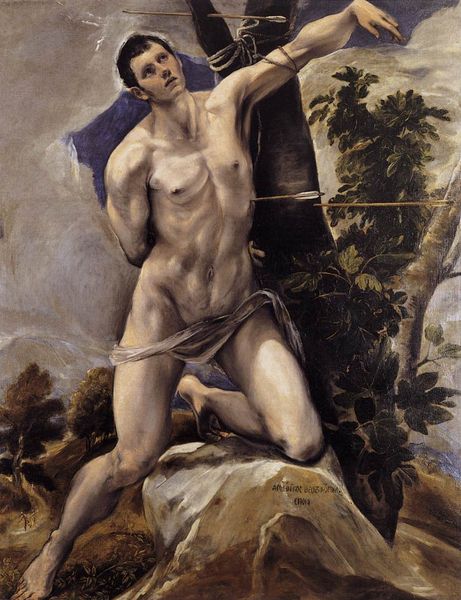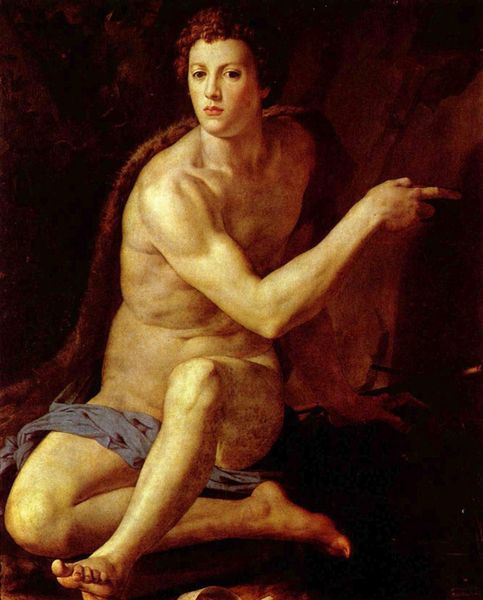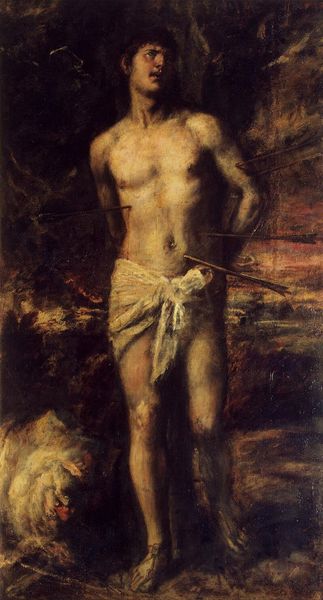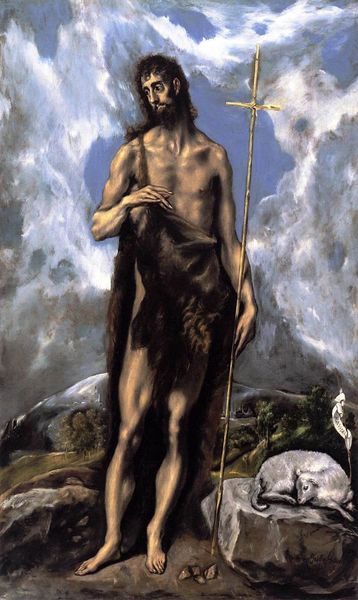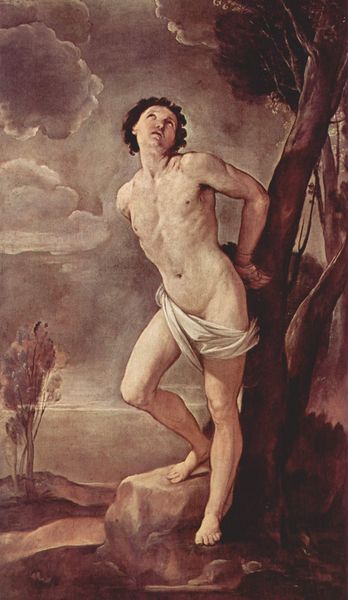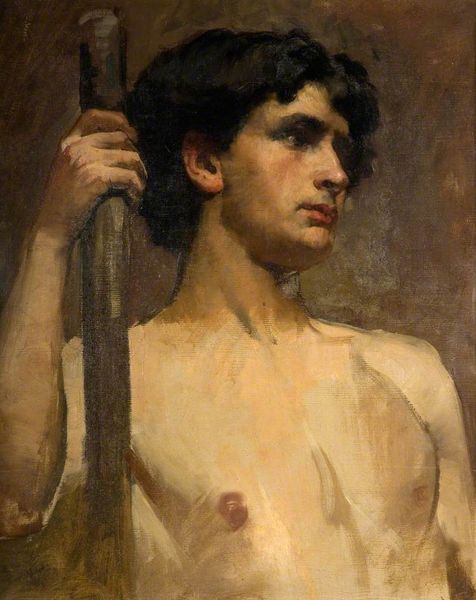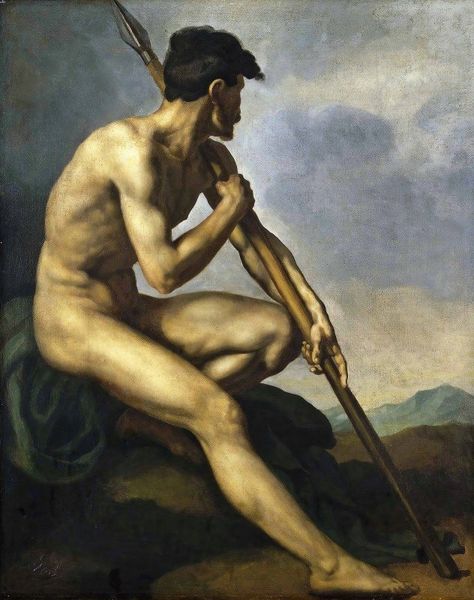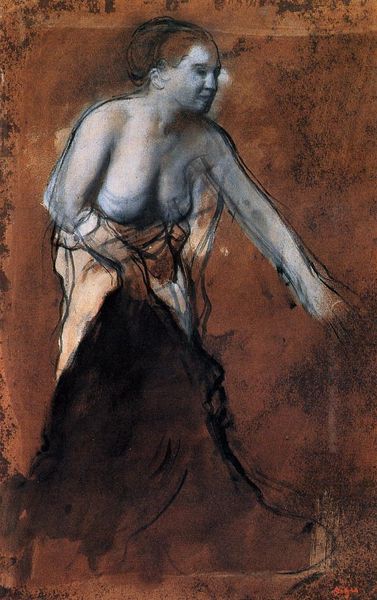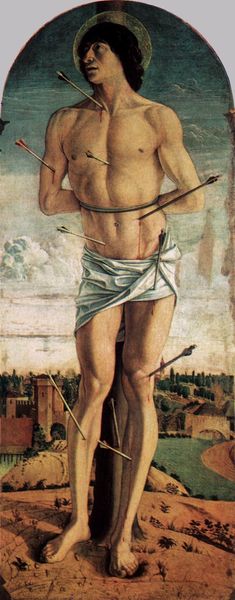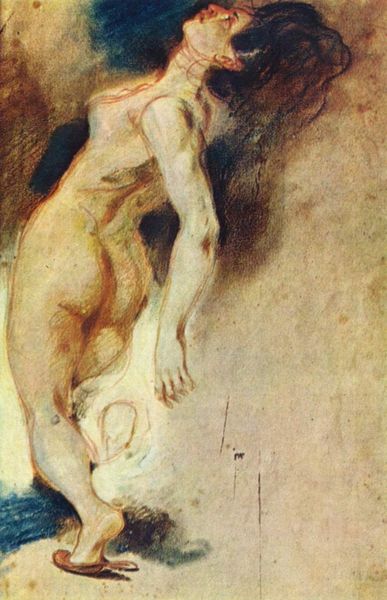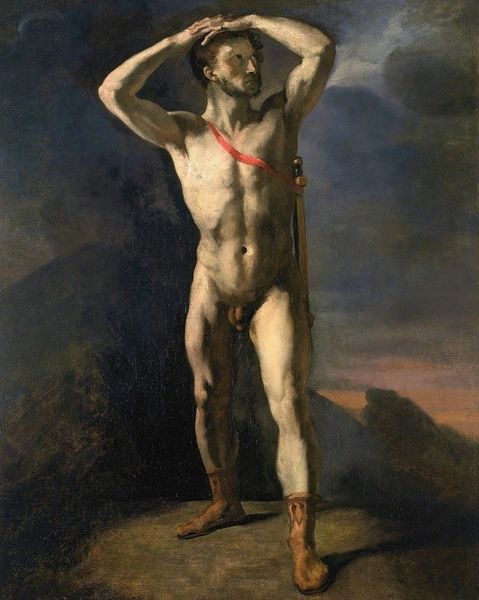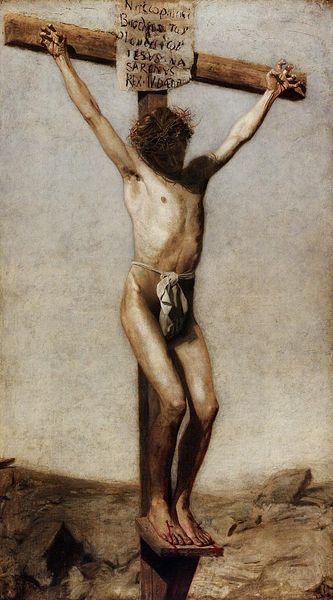
oil-paint
#
oil-paint
#
mannerism
#
figuration
#
oil painting
#
christianity
#
men
#
human
#
history-painting
#
nude
Dimensions: 115 x 85 cm
Copyright: Public domain
Curator: El Greco’s “St. Sebastian,” completed around 1612, captures a really distinctive depiction of the martyred saint. It is rendered in oil paint and currently resides in the Museo del Prado in Madrid. Editor: My first impression? The drama is almost operatic! Sebastian's upward gaze amidst those swirling clouds suggests both pain and intense spiritual yearning. Curator: Absolutely, that's El Greco's Mannerist style shining through. Notice how the elongated proportions and the stark contrast of light and shadow emphasize the emotional intensity. In Christian iconography, St. Sebastian represents resilience and faith in the face of persecution. He's often seen as a protector against plagues. Editor: It is an incredible study in power, and equally, powerlessness. The arrows become a stark metaphor for systematic oppression, the piercing and objectification of the body. His nudity invites the viewer's gaze, almost complicit in the violence. Curator: Well, traditionally, the arrows symbolized not only the physical suffering but also the spiritual attacks faced by devout Christians. He did not die after this attack. Irene of Rome nursed him back to health only for him to return to Emperor Diocletian to be sentenced to death by clubs. The arrows were an act of attempted, failed murder. Editor: Right, so the story, combined with this theatrical staging of the figure in defiance, offers, in many ways, an ode to surviving pain. It prompts a contemplation of resilience and how we confront injustices, both historically and in our contemporary struggles for equality. Curator: And thinking about the enduring symbolism of the arrow itself, beyond religious martyrdom, arrows have represented everything from divine intervention and direction to war, speed, and love, just from Cupid's arrow. I agree with you—El Greco brilliantly distills this potent mix of vulnerability and defiance. Editor: The history of St. Sebastian has undoubtedly transformed into myriad, and often, conflicting images. But, I think what’s striking here is that the painting serves as a reminder of how historical figures and symbols can continually be reinterpreted to mirror our present concerns. Curator: A painting like this reveals to us the lasting resonance of symbols that weave through art and culture. It offers a window into both history and ourselves.
Comments
No comments
Be the first to comment and join the conversation on the ultimate creative platform.
